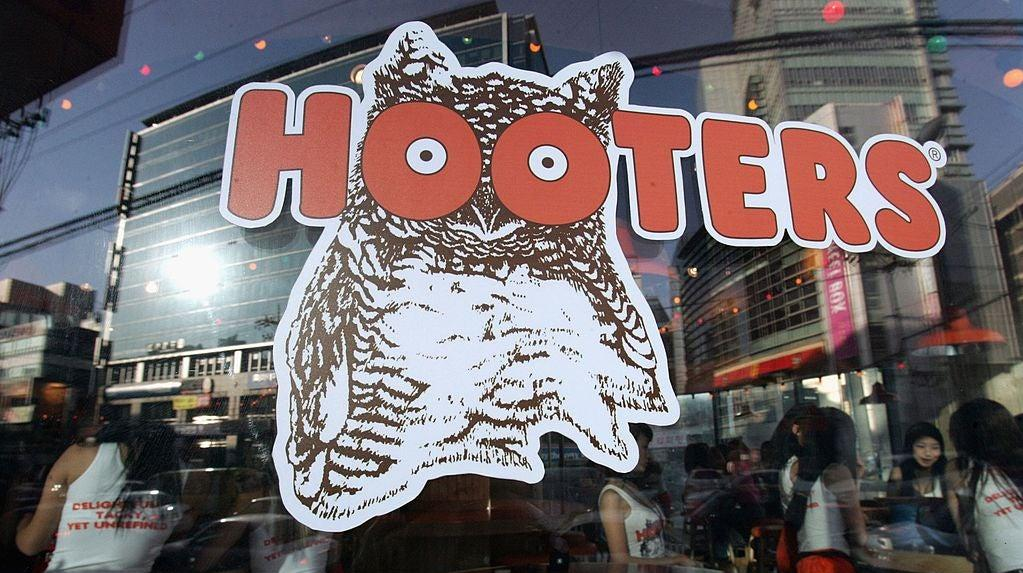Hooters Is Doing Great, In Case You Were Wondering
The American restaurant chain executed a series of savvy moves to keep it ahead of a global pandemic.
There's nothing we love more than a good brand story. But while a lot of ink has been dedicated to the tale of Ray Kroc turning McDonald's into a vast empire or the single beloved Shake Shack location in Madison Square Park that reshaped America's taste in burgers, one brand has been quietly making all the right moves in recent years so as to not only grow its business, but weather an unprecedented global pandemic with reasonable aplomb: Hooters.
As part of its annual Top 500 report (from which we've already learned a lot), Nation's Restaurant News has a fascinating rundown of the Hooters business model, which kicked off a series of innovations in the years prior to 2020 that, unbeknownst to anyone, would eventually position the brand as a COVID-19 success story. Total sales in 2020 were $841 million, with 2.7% growth across the year. Here are some of the ways the brand achieved those figures.
Takeout and delivery (of course)
Like so many brands learned the hard way last year, takeout and delivery are going to become tentpoles of every operation going forward, even after America returns to pre-pandemic levels of indoor dining. But while many chains scrambled to build the infrastructure to accommodate walkup windows, drive-thrus, curbside delivery stations, or whatever they could manage, Hooters had already had these systems in place for years.
Back in 2014, Hooters hatched a spin-off fast casual concept called Hoots, whose limited menu focused more narrowly on the brand's popular chicken wings. Locations of the new concept first opened in 2017. (Hoots is also aimed more at families, with a brighter interior and a staff composed of people outside the normal, ahem, "specifications" associated with Hooters servers.) Already, Hoots was better positioned than Hooters to handle takeout orders.
Then, Uber Eats sought a partnership with Hooters in 2019 to create a virtual burger concept, due to customers' insatiable quest for burgers. Thus Hootie's Burger Bar—named for the brand's owl mascot, Hootie—was born. Remember that back in 2019, virtual kitchens were a relatively unknown phenomenon among casual users of delivery apps. Hooters was early on that scene.
After Hootie's Burger Bar came Hootie's Bait & Tackle and, of course, Hootie's Chicken Tenders, because every brand needs a virtual chicken concept these days. All of these "restaurants" share kitchen space and ingredients, but cultivate their own customer bases, leading to stronger sales.
In short, Hooters didn't just come into the pandemic with a strong takeout/delivery game. It figured out how to clone its own team.
Location, location, location
The first Hooters location opened in Clearwater, Florida, in 1983, and it continues to operate many locations across the Southeast United States today. Additionally, the majority of Hoots locations are in this region. Why does this matter? Because Southeastern states were some of the first ones to lift pandemic restrictions last year, allowing eager customers in those areas to return to their favorite restaurants for indoor dining. In the case of many, many people, Hooters is a favorite, and one that folks are eager to patronize. Which brings us to the final point cited by NRN as a contributor to Hooters' 2020 success.
People, uh, just love Hooters
"We're very honored to have such a loyal customer base," said Hooters CEO Sal Melilli, speaking with Nation's Restaurant News. "They came back very fast [once dining rooms reopened] and they came back more frequently. Our core Hooters fan is really what got us through this pandemic."
Since customers tend to add more items to their tickets when dining in versus ordering for takeout or delivery, the return of sit-down dining was a boon for the brand.
For those of us who typically like to think of Hooters as a stubborn relic of a different era, I recommend reading the article here. It might leave you feeling begrudgingly impressed by a brand that appears to know just how to choose its openings for expansion and reinvention.
